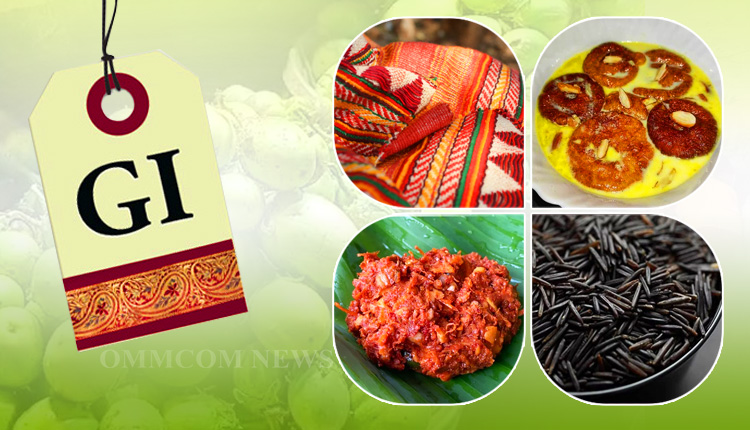Context
Seven products from Odisha, ranging from the Similipal Kai chutney made with red weaver ants to the embroidered Kapdaganda shawl, have bagged the coveted Geographical Indication (GI) tag in recognition of their exclusivity to the state.
Key Products get GI tag
Kai chutney

- The savoury chutney is popular in the region for its healing properties and also deemed important for nutritional security of the tribal people.
- The red weaver ants and found it contains valuable proteins, calcium, zinc, vitamin B-12, iron, magnesium, potassium, sodium, copper, amino acids, among others.
- Consuming the species can help boost the immune system and prevent diseases, according to experts.
- The tribal healers also prepare a medicinal oil in which they dip the ants along with pure mustard oil.
- The red weaver ants are indigenous to Mayurbhanj and are found in abundance in the jungles of every block area of the district, including in the Similipal Tiger Reserve, throughout the year.
Kapdaganda shawl

- Woven and embroidered by the women of the Dongria Kondh tribe, a particularly vulnerable tribal group (PVTG) in the Niyamgiri hills in Odisha’s Rayagada and Kalahandi districts, the shawl reflects the rich tribal heritage of the Dongria Kondhs.
- It is embroidered on an off-white coarse cloth with red, yellow and green coloured threads, with each colour holding significance.
- Green symbolises the mountains and hills, and
- yellow stands for peace and happiness.
- Red stands as the symbol of blood.
Lanjia Saura Painting

- The painting, one of the oldest tribal art forms, is also known as Idital. The artworks are famous for their beauty, aesthetics, ritualistic association and iconography.
- The art form belongs to the Lanjia Saura community, a PVTG largely residing in the Rayagada district.
- These paintings are in the form of exterior murals painted on the mud walls of homes.
Koraput Kala Jeera Rice
- The black-coloured rice variety, also known as the ‘Prince of Rice’, is famous for its aroma, taste, texture and nutritional value.
- Tribal farmers of the Koraput region have preserved the rice variety for around 1,000 years.
- As the rice grains resemble cumin seeds, it is also called Kala Jeera.
- Consumption of the rice variety helps in increasing haemoglobin levels and improves metabolism in the body.
Nayagarh Kanteimundi Brinjal

- Nayagarh Kanteimundi Brinjal is known for its prickly thorns on the stems and the whole plant. The green and round fruits contain more seeds as compared to other genotypes.
- It is famous for its unique taste and relatively short quick cooking time. The plants are resistant to major insects and can be grown with minimal pesticide.
- It is being widely cultivated in Nayagarh district of the state. The growers are getting a yield of up to 200 quintals per hectare and selling at around Rs 60 per kg.
Odisha Khajuri Guda

- Odisha’s “Khajuri Guda” or jaggery is a natural sweetener extracted from date palm trees and has its origin in the Gajapati district.
- Traditionally, the jaggery is prepared in a trapezoidal form called ‘Patali Gur’ and is organic by nature. It is dark brown and has a unique taste.
Dhenkanal Magji
- Dhenkanal Magji is a type of sweet made from cheese from buffalo milk, with distinct characteristics in terms of appearance, taste, flavour, shape, and size.
- It also has unique nutritional values that distinguish it from other cheese-based sweets.
- Thousands of people were earning their livelihood through animal husbandry, especially buffalo rearing, during the British era. The region was the hinterland of buffalo milk production and cheese was the third largest produce, after milk and curd.
About Geographical Indication (GI) Tag
- It is a sign used on products that have a specific geographical origin and possess qualities or a reputation that are due to that origin.
- This is typically used for agricultural products, foodstuffs, wine and spirit drinks, handicrafts and industrial products.
- The Geographical Indications of Goods (Registration and Protection) Act, 1999 seeks to provide for the registration and better protection of geographical indications relating to goods in India.
- This GI tag is valid for 10 years following which it can be renewed.

